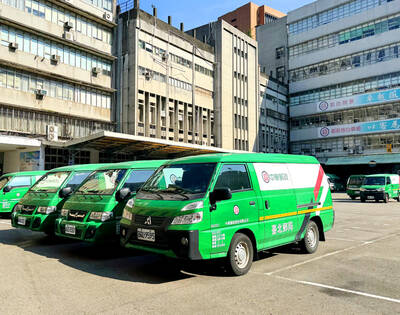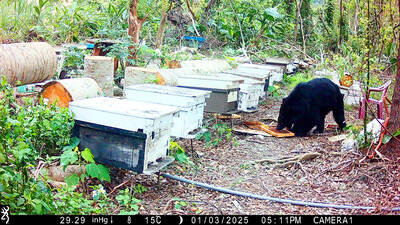Researchers at Academia Sinica’s Institute of Molecular Biology have found that defects in particular neuronal circuits can induce autistic characteristics, a breakthrough discovery toward a potential clinical treatment for the disorder, which has also been proposed by the study.
Autism is a disorder becoming increasingly prevalent in highly developed countries, with its incidence estimated in 2012 to be one in 88 children in the US, and boys are five times more likely than girls to be diagnosed with an autism spectrum disorder (ASD).
ASDs are now known to be caused by early abnormal neural development, and while clinical studies have found an association with neural circuit formation, the molecular mechanism at work remained unclear, the team said.
Recent genome sequencing studies of ASDs have identified hundreds of mutated genes in people with the disorder, and the knowledge could be the first step in unveiling the pathogenesis of ASDs.
However, how disruptive mutations of genes lead to abnormal neural development, and thereby autism, is an unanswered question.
After nine years of research, lead author of study, Hsueh Yi-ping (薛一蘋), and her team found that insufficiency of the Tbr1 gene — one of the six most targeted genes with recurrent mutations identified in people with autism — results in defective axonal projections of amygdala neurons in mice, which acted differently from their wild-type counterparts in social interaction.
Hsueh said that mice with deficient Tbr1 were found to be missing “the posterior part of the anterior commissure” in their brains, which is the part responsible for connecting the two amygdalae in the two hemispheres of the brain.
“Not only was the connection between the two amygdalae impaired, the intra-amygdalar connections were also reduced,” Hsueh said.
The amygdala, an almond-shaped set of nuclei, is the region of the brain in charge of social interaction, emotional response, fear and aggression, the research team said.
The study found that mice with insufficient Tbr1 and reduced inter and intra-amygdala connectivity displayed autism-like behavior.
Researchers successfully ameliorated the behaviors by giving those animals D-cycloserine, an antibiotic that was at first used to fight Mycobacterium tuberculosis, but was later found to be helpful for treating a range of psychiatric ailments.
Hsueh said that although the missing posterior part of the anterior commissure cannot be restored, as it is a developmental defect, D-cycloserine could increase the activity of amygdalar neurons and ameliorate the mice’s autism-like behavior.
As D-cycloserine is a medication that is currently already in use clinically, its potential to be used for treatment of ASDs in the near future will be higher, if its related therapeutic effect is verified by further studies,” Hsueh said.
The team’s study has been published in the journal Nature Neuroscience.

SHIPS, TRAINS AND AUTOMOBILES: The ministry has announced changes to varied transportation industries taking effect soon, with a number of effects for passengers Beginning next month, the post office is canceling signature upon delivery and written inquiry services for international registered small packets in accordance with the new policy of the Universal Postal Union, the Ministry of Transportation and Communications said yesterday. The new policy does not apply to packets that are to be delivered to China, the ministry said. Senders of international registered small packets would receive a NT$10 rebate on postage if the packets are sent from Jan. 1 to March 31, it added. The ministry said that three other policies are also scheduled to take effect next month. International cruise ship operators

NUMBERS IMBALANCE: More than 4 million Taiwanese have visited China this year, while only about half a million Chinese have visited here Beijing has yet to respond to Taiwan’s requests for negotiation over matters related to the recovery of cross-strait tourism, the Tourism Administration said yesterday. Taiwan’s tourism authority issued the statement after Chinese-language daily the China Times reported yesterday that the government’s policy of banning group tours to China does not stop Taiwanese from visiting the country. As of October, more than 4.2 million had traveled to China this year, exceeding last year. Beijing estimated the number of Taiwanese tourists in China could reach 4.5 million this year. By contrast, only 500,000 Chinese tourists are expected in Taiwan, the report said. The report

The Forestry and Nature Conservation Agency yesterday launched a gift box to market honey “certified by a Formosan black bear” in appreciation of a beekeeper’s amicable interaction with a honey-thieving bear. Beekeeper Chih Ming-chen (池明鎮) in January inspected his bee farm in Hualien County’s Jhuosi Township (卓溪) and found that more than 20 beehives had been destroyed and many hives were eaten, with bear droppings and paw prints near the destroyed hives, the agency said. Chih returned to the farm to move the remaining beehives away that evening when he encountered a Formosan black bear only 20m away, the agency said. The bear

Chinese embassy staffers attempted to interrupt an award ceremony of an international tea competition in France when the organizer introduced Taiwan and displayed the Republic of China flag, a Taiwanese tea farmer said in an interview published today. Hsieh Chung-lin (謝忠霖), chief executive of Juxin Tea Factory from Taichung's Lishan (梨山) area, on Dec. 2 attended the Teas of the World International Contest held at the Peruvian embassy in Paris. Hsieh was awarded a special prize for his Huagang Snow Source Tea by the nonprofit Agency for the Valorization of Agricultural Products (AVPA). During the ceremony, two Chinese embassy staffers in attendance